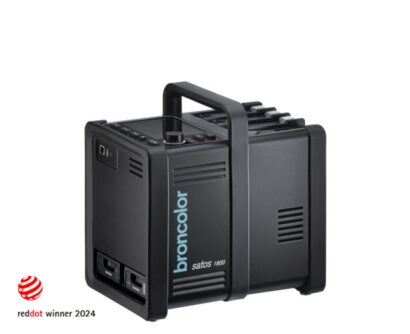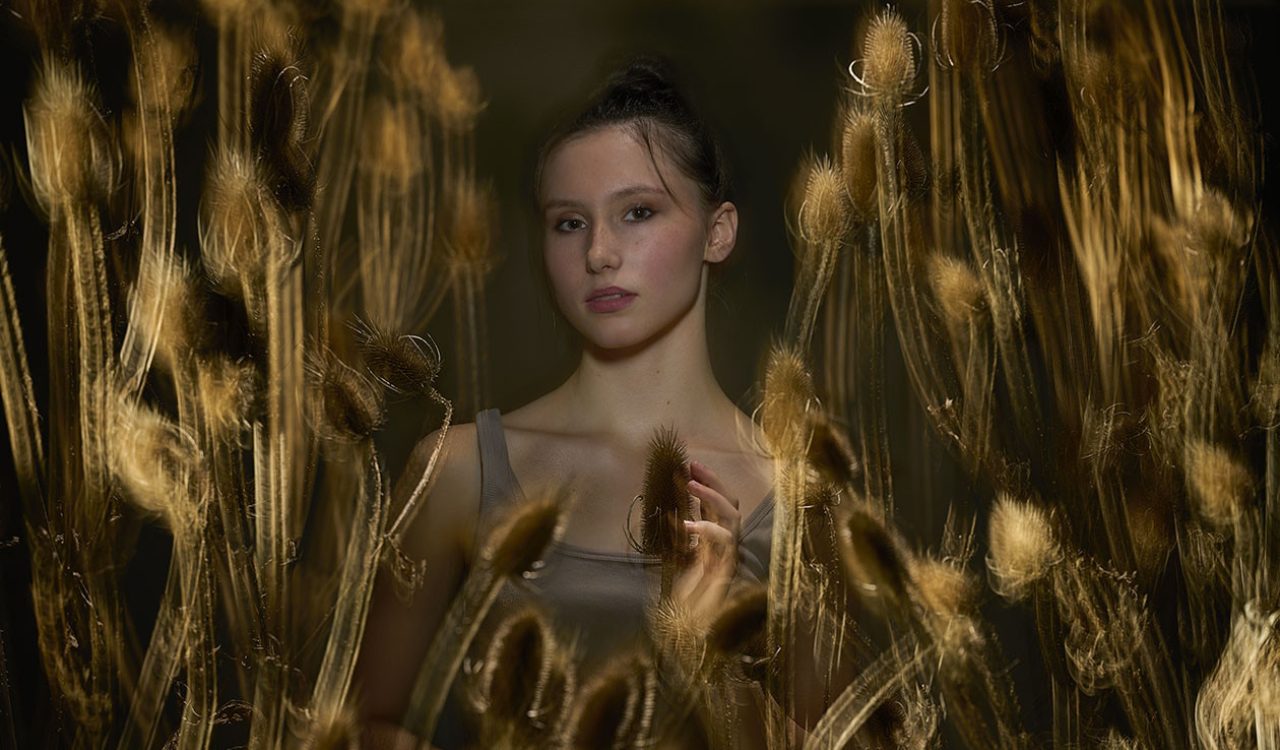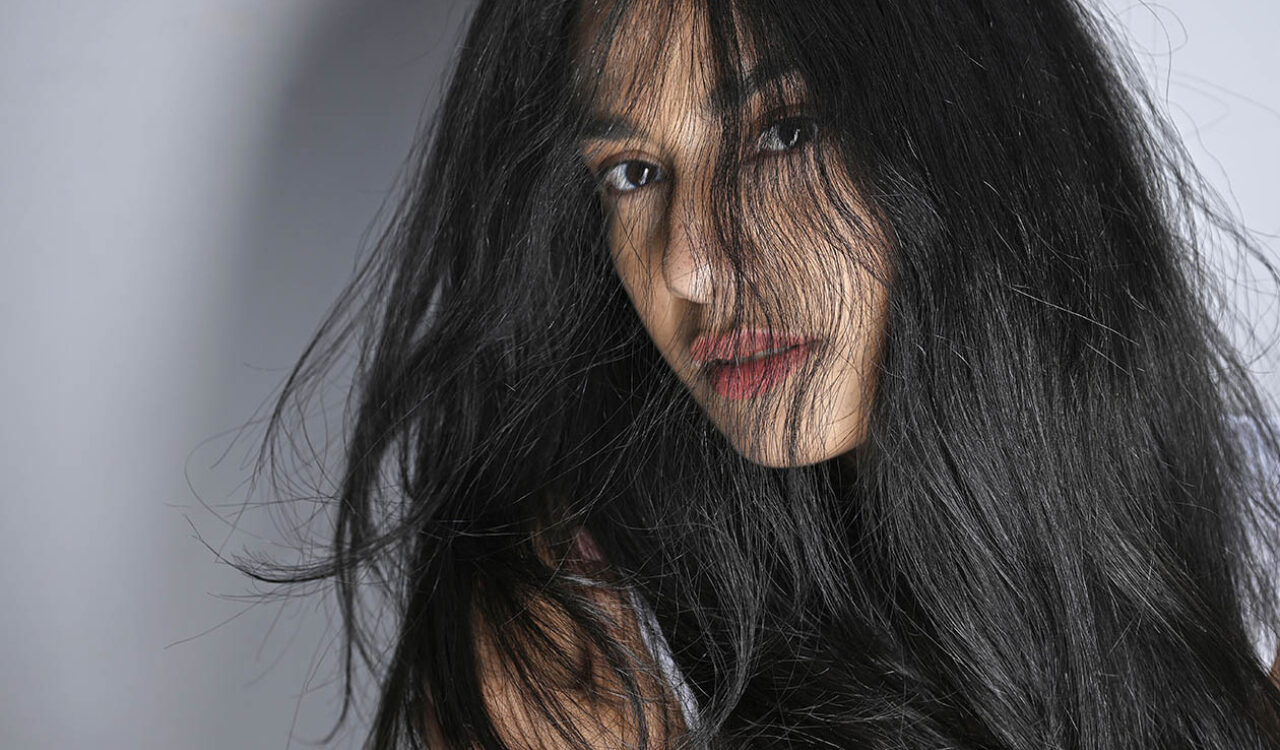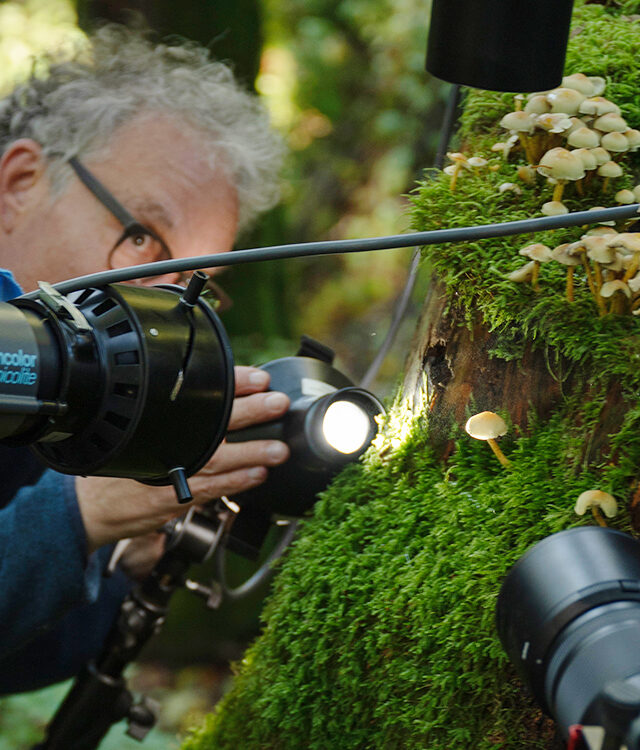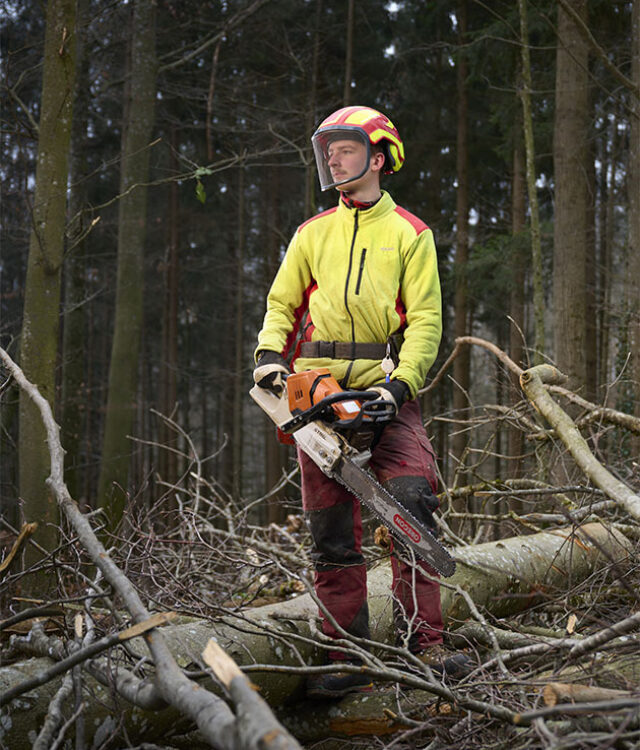A popular stylistic device in location photography is to visually separate the subject/model from the background using photographic means. This can be achieved through long focal lengths and wide apertures (as in fashion photography), or through the deliberate use of artificial light, as shown in this example. The focal length here was only 40mm, so a shallow depth of field was not possible – even with an open aperture of 2.8.
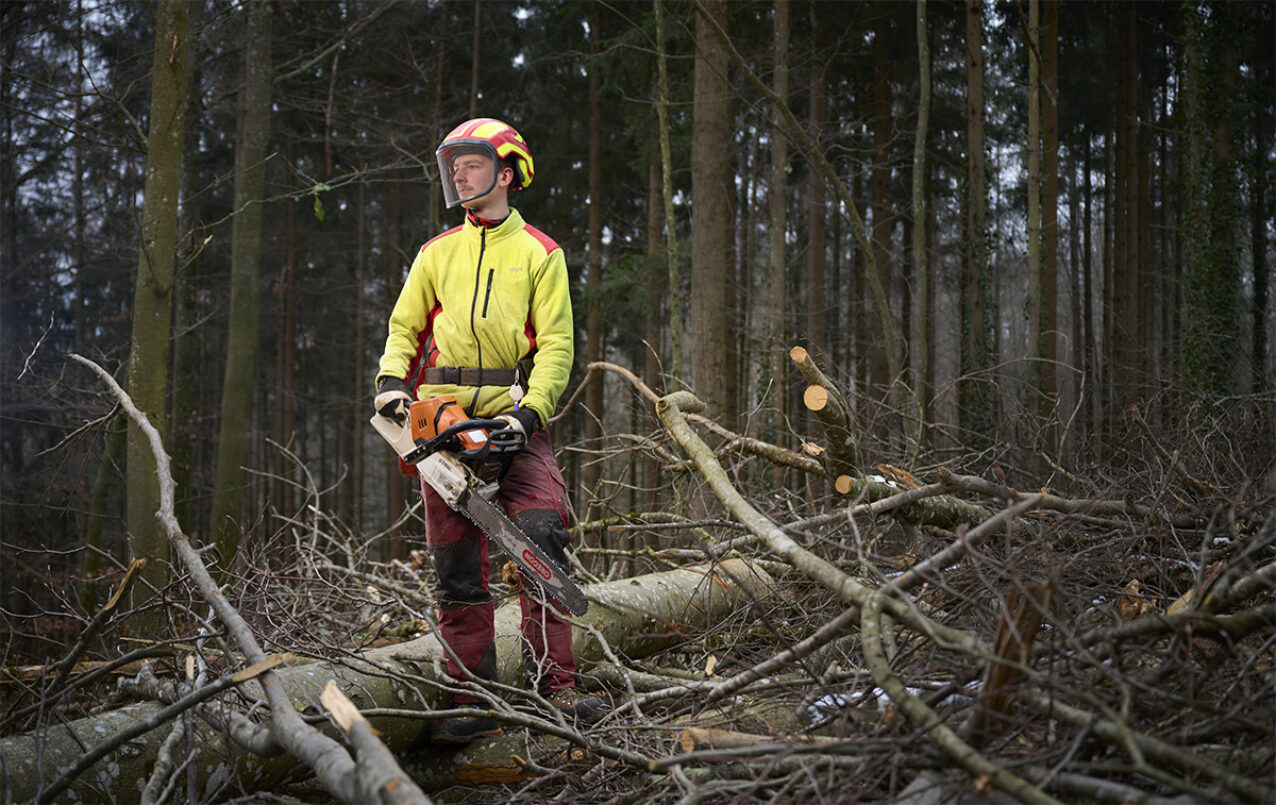
The art lies in using the light so that it is clearly visible on the model and makes it stand out from the background, without appearing unnatural. Therefore, it can make sense to merely enhance the naturally existing ambient light locally:
The main light here is a large softbox with side lengths of 90 and 120 cm. It is directed upward to create a subtle brightness gradient on the forest worker, similar to the one that was already visible without additional lighting due to the light-absorbing ground. This also avoids illogical shadows on the felled wood, which would have highlighted the use of artificial light. A light orange filter further separates the model from the cool-toned environment in terms of color.

To the left, the forest was less dense, allowing more natural light through. An edge light from the same direction supported this natural light. A P70 standard reflector with a tight honeycomb grid was used just outside the frame.
An octabox with a 75 cm diameter subtly brightened the shadows created by the first two lights from the opposite side.
The image was taken with a mirrorless full-frame camera, using a 40mm focal length and a working aperture of f/2.8.

